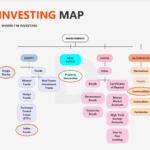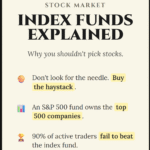The integration of SAVE International® Value Methodology (VM) into project management is a paradigm shift that can significantly enhance the effectiveness, efficiency, and success of project endeavors. As a certified Project Management Professional (PMP) expert, I am aware of the profound impact that VM can have on the entire project lifecycle. This systematic and value-focused approach complements traditional project management techniques, making them more effective. The VM methodology emphasizes defining and delivering value in every aspect of a project, instilling a discipline that revolves around maximizing value for stakeholders. By integrating VM principles into project management practices, specially during designing and planning, managers are equipped with a framework that elevates decision-making processes, optimizes resource allocation, and ensures that every project element aligns with the core objectives of delivering maximum value. This integration is particularly crucial in today’s complex and dynamic project environments, where traditional approaches may fall short in addressing the multifaceted challenges faced by project teams. Adopting VM into project management is not just an addition of new tools or methods; it’s a transformative approach that redefines how projects are conceptualized, planned, executed, and evaluated, leading to more strategic, cost-effective, and successful project outcomes.
The inception of any project is critical. Integrating VM into the planning phase instills a value-centric mindset from the outset. It prompts project managers to define clear value objectives, ensuring that all subsequent plans, from scope definition to resource allocation, are aligned with these objectives. This initial alignment sets the stage for more effective execution and outcomes. In addition, effective stakeholder management is at the heart of successful project management. VM enhances this aspect by emphasizing the identification and understanding of stakeholder value expectations. This understanding allows for more effective communication, engagement, and management of stakeholders throughout the project lifecycle.
While “Scope Creep” is a common challenge in project management, VM provides a robust framework for evaluating the project scope against value objectives. This not only prevents scope creep but also ensures that every element of the scope directly contributes to the overall project value. It is noteworthy that VM guides project managers in making more judicious decisions about resource allocation. By prioritizing tasks and components based on their value contribution, resources are utilized more efficiently, leading to cost savings and enhanced project performance.
Having a look at Problem-Solving techniques, VM encourages innovative thinking by challenging project teams to find alternative solutions that enhance value. This approach fosters creativity and drives the development of unique solutions that can significantly improve project outcomes.
VM’s focus on delivering optimal value complements quality management practices. It ensures that quality is not just about meeting specifications but also about delivering the highest value. This integration leads to a balance between quality, cost, and functionality. And on the other hand, VM aids in identifying value-based risks, which might be overlooked in traditional risk management approaches. By focusing on value, project managers can anticipate and mitigate risks that could impact the project’s value proposition.
Today’s project environment demands sustainability. VM encourages the development of sustainable solutions that offer long-term value. This focus aligns project outcomes with broader environmental, social, and economic objectives. and VM aids in developing performance metrics centered around value realization. These metrics allow for more accurate assessment of project success, focusing on value delivery rather than just project completion.
The integration of SAVE International® VM into project management is a major advancement in the field, especially from a PMP certified perspective. This approach places a value-centric philosophy at the core of project management, which goes beyond traditional methods. With a constant focus on value objectives from beginning to end, this approach encourages a strategic shift towards innovative, efficient, and effective project management practices. Project managers can align every decision, resource, and action with the overarching value objectives to deliver projects that meet or exceed stakeholder expectations in terms of cost, quality, and functionality. By adopting this approach, project managers can enhance risk management, stakeholder engagement, and resource optimization, leading to more sustainable and successful project outcomes. The integration of VM in project management is not just a minor improvement; it is a paradigm shift that redefines the benchmarks of project success. It empowers project managers to navigate the complexities of modern projects with greater confidence and competence, ensuring a consistent delivery of high-value outcomes. Therefore, it is not just a recommendation but an essential evolution for any forward-thinking project management professional aiming to excel in an increasingly competitive and complex project environment.















